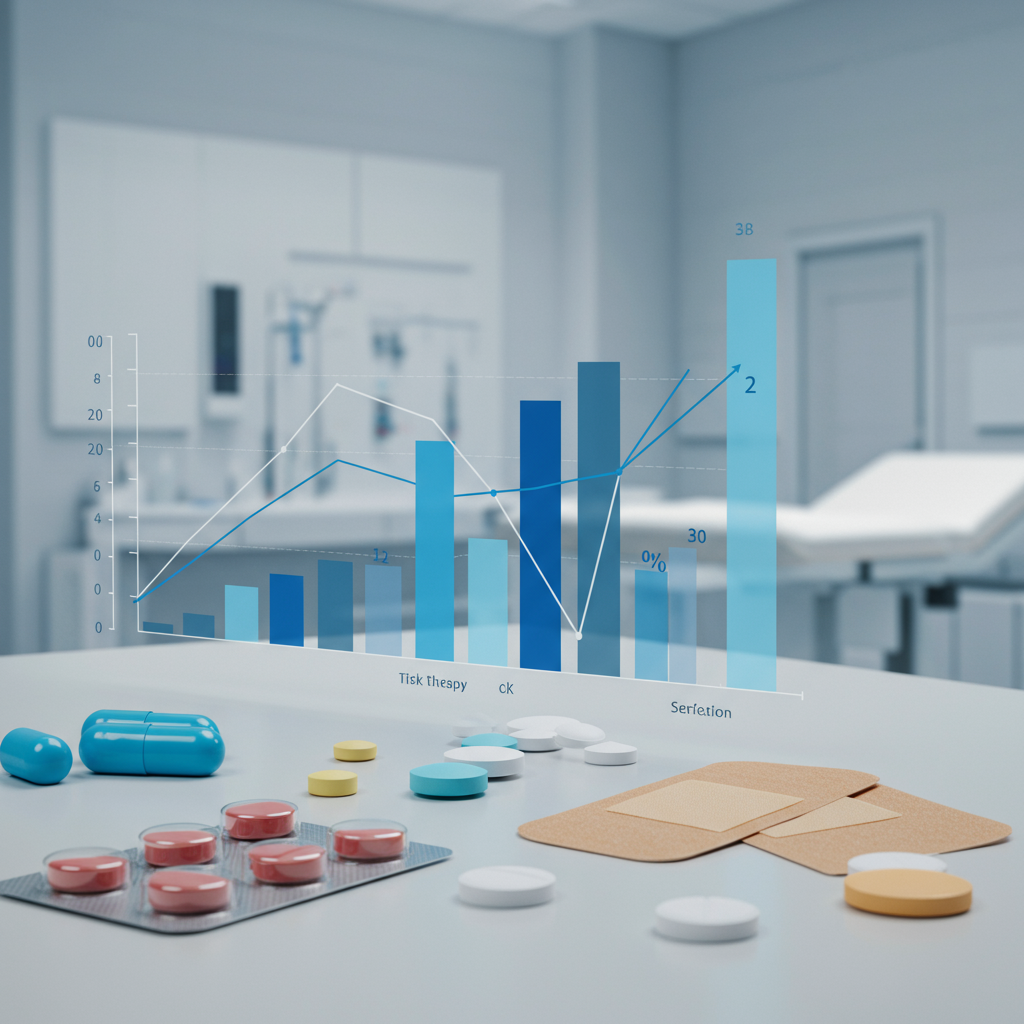Breaking health news reveals a crucial link between the specific type of hormone replacement therapy (HRT) used by younger women and their risk of developing breast cancer before menopause. While HRT is a vital treatment for many, a landmark international meta-analysis, published in Lancet Oncology, suggests that the composition of hormone therapy matters significantly for women aged 16 to 54. This study fills a critical gap, as most previous research focused primarily on older women who had already gone through menopause.
For years, studies have explored the connection between hormone therapy and breast cancer risk. Much of this work centered on post-menopausal women, where combined oestrogen plus progestin therapy was identified as a risk factor. However, less was understood about the impact on younger women. This includes those receiving HRT following gynecological surgery, such as a hysterectomy or oophorectomy, or women navigating the complex hormonal changes of perimenopause. An international team, featuring scientists from the National Institute of Environmental Health Sciences in the US, set out to provide clearer guidance for this group. Their findings offer new insights and potential adjustments to clinical recommendations.
Unpacking the Study’s Key Findings
The research team conducted a large-scale meta-analysis. They pulled together data from multiple previous studies. This comprehensive approach allowed them to examine the experiences of a vast cohort: 459,476 women between the ages of 16 and 54. Within this large group, 8,455 women were diagnosed with young-onset breast cancer. This is defined as breast cancer found before the age of 55. Approximately 15 per cent of all women in the study reported using some form of hormone therapy. The most frequently used types were oestrogen-only therapy and combined oestrogen plus progestin therapy.
The core discovery from the meta-analysis highlights the differing impacts of these HRT types. The study found that using oestrogen-only hormone therapy appeared to decrease the risk of developing young-onset breast cancer. Specifically, it was associated with a 14 per cent lower risk compared to women not using HRT. In stark contrast, using oestrogen plus progestin therapy appeared to increase this risk. Women on combined therapy saw their risk increase by 10 per cent. This suggests that the addition of synthetic progestin hormone may alter the effect seen with oestrogen alone.
Why This Study Matters for Younger Women
Previous guidance on HRT risks largely stemmed from data on older, post-menopausal populations. Younger women use HRT for different reasons and at different stages of their hormonal lives. This study provides much-needed specific data for their age group. The researchers noted that while factors like age at first use, duration of use, and prior gynecological surgery might influence the strength of these associations, the general trend remained consistent. Oestrogen-only therapy seemed protective, while combined therapy showed an increased risk. These findings are crucial for doctors and patients making decisions about hormone therapy in younger women, offering a more evidence-based foundation for discussions.
The number of women using HRT has been increasing in recent years. In the UK, for example, prescriptions have roughly doubled since 2018, now reaching around 2.6 million users. HRT aims to replenish hormone levels, particularly oestrogen and progesterone, which decline during perimenopause and menopause. It is available in various forms like pills, patches, and gels, containing different hormone combinations. While effective for symptom relief, understanding the nuances of risk, especially for younger users, is vital.
Expert Perspectives and Practical Implications
Commenting on the study, Dr. Kotryna Temcinaite, head of research communications at the charity Breast Cancer Now, provided valuable context. She affirmed that the large-scale study offers beneficial insights for women under 55. Dr. Temcinaite highlighted that the results, showing a lower risk with oestrogen-only therapy and a slight increase with combined therapy, align broadly with existing knowledge about HRT use for menopausal symptoms in older women. She pointed out that the increased risk with combined therapy was particularly noted when used for over two years or in women who had not had a hysterectomy or oophorectomy.
Dr. Temcinaite emphasized that for most women, the risk of developing breast cancer due to HRT remains small. She stressed that this small risk is generally outweighed by the benefits HRT provides. The duration of HRT use is a known factor; the risk tends to be higher the longer a woman takes it. Crucially, the risk is consistently found to be higher with combined HRT compared to oestrogen-only versions. Making the decision to start or continue HRT is deeply personal. It is essential for individuals to have all the necessary information regarding benefits and risks.
Discussing HRT Choices with Your Doctor
This new research underscores the importance of an open conversation between patients and their healthcare providers. Women considering or currently using HRT, especially those under 55, should discuss their personal circumstances, health history, and the specific type of hormone therapy they are using. Factors such as family history of breast cancer, duration of intended use, and whether they have undergone surgery (like a hysterectomy) are relevant to assessing individual risk. Doctors can help weigh the benefits of HRT for symptom management or other health needs against the newly clarified risks for younger women based on hormone type.
While this study provides valuable data, it’s one piece of a complex puzzle. Breast cancer risk is influenced by many factors, including genetics, lifestyle, and reproductive history. Understanding how specific medical interventions like HRT fit into this picture is an ongoing area of research. The findings from this meta-analysis provide clearer evidence for tailoring HRT choices in younger women, promoting shared decision-making based on the latest scientific understanding.
Frequently Asked Questions
What did the new study on HRT in young women find about breast cancer risk?
A recent meta-analysis published in Lancet Oncology found that for women aged 16-54, the type of HRT matters regarding young-onset breast cancer risk. Oestrogen-only therapy was linked to a 14% decrease in risk. Conversely, combined oestrogen plus progestin therapy was associated with a 10% increase in risk. This study highlights differing risks based on the specific hormone combination used.
Should young women stop taking combined HRT based on this study’s findings?
The decision to take HRT is a personal one, made in consultation with a healthcare provider. Experts like Dr. Kotryna Temcinaite note that for most women, the overall breast cancer risk from HRT is small and often outweighed by the benefits. This study provides specific data on risk based on HRT type for younger women. It’s crucial to discuss these findings, along with your personal health history and risk factors, with your doctor to make an informed decision about your treatment plan.
Where can I find reliable information and support regarding HRT and breast cancer risk?
Reliable information should primarily come from your doctor or specialist healthcare team. They can provide personalized advice based on your specific situation. Additionally, reputable health charities focusing on breast cancer or women’s health often provide resources and helplines. For example, the charity Breast Cancer Now offers support and information through resources like their confidential helpline.
Conclusion
This significant new study offers vital clarity regarding the link between hormone replacement therapy and breast cancer risk specifically for younger women under 55. By demonstrating that oestrogen-only therapy may lower risk while combined oestrogen plus progestin therapy may increase it, the research provides actionable information for both clinicians and patients. While the overall risk for most individuals remains small and often justified by HRT’s benefits, understanding these distinctions based on hormone type is crucial for informed decision-making. As HRT use continues to rise, ongoing dialogue about the latest research and personalized risk assessment with healthcare providers is more important than ever.


